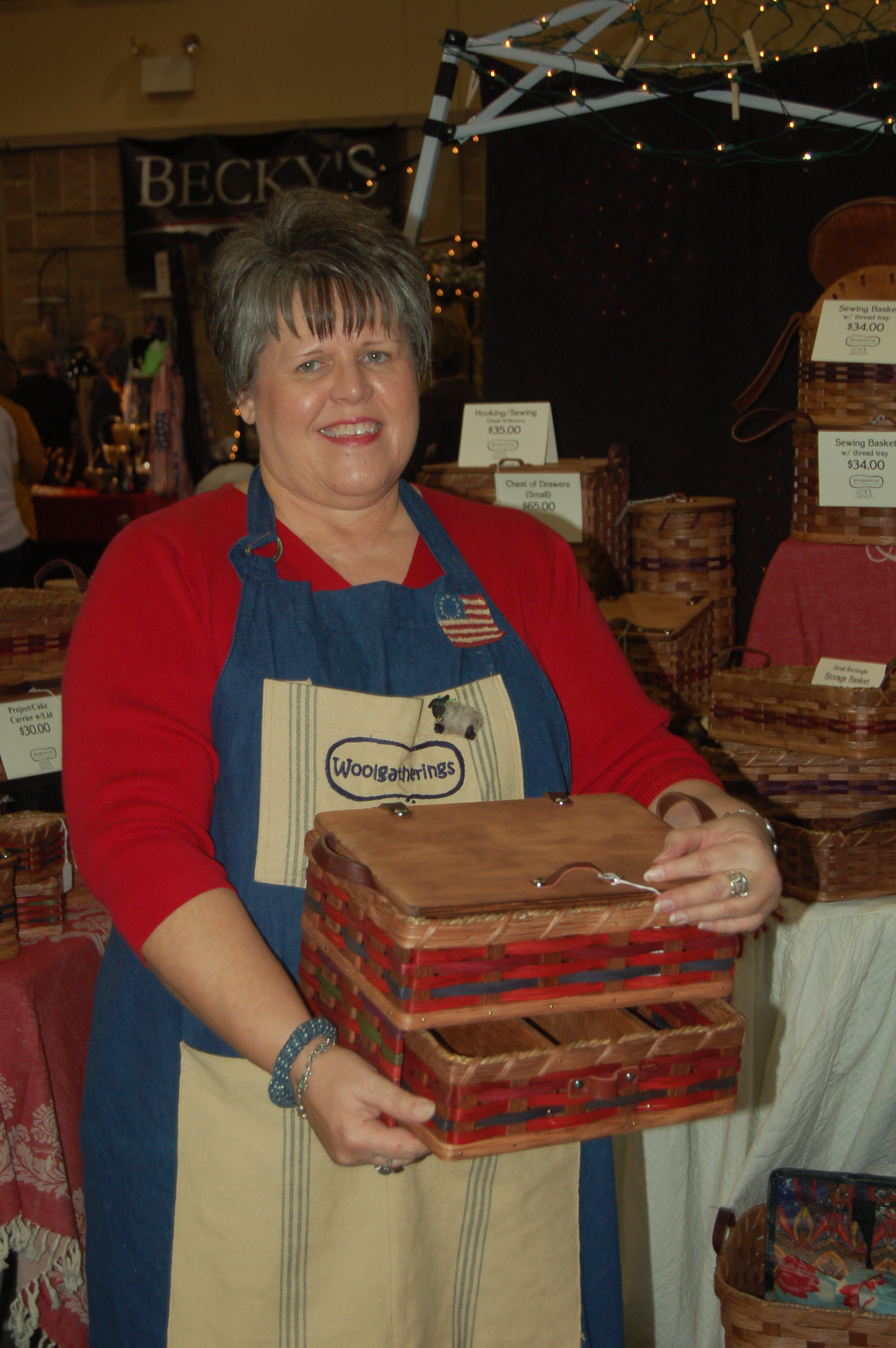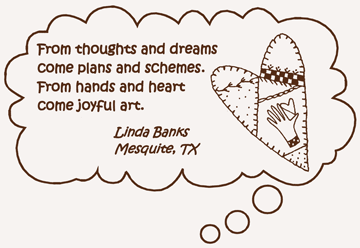The Woolgathering Basket and How It All Began
I’ve always loved antiques and textiles of all kinds. My mother, grandmother, and great-grandmother are and were needle workers and they passed their love of quilts, crochet and tatting to me. Unfortunately, I was clumsy with a needle and had no patience for sewing tiny stitches and only made tangled knots from crochet thread or yarn. But I’ve always loved the textures of textiles. After many years of appreciating and collecting needlework, I discovered primitive rug hooking. Because a primitive hook was large enough for me to hold it in my hand, it didn’t take long to become “hooked” on rug hooking.
After taking a couple of rug hooking classes, I realized it was an art/craft that needed lots of containers for storing wool, hooks, cutters, patterns, foundation cloth and all the essential equipment needed for a project. My work space was always a mess and traveling to rug camp or a monthly gathering was quite an ordeal. I had to have lots of bags to put everything in, a car to haul them in, muscles to carry them back and forth, and lots of space to spread everything around within arms reach.
About this time my friend, Rita Runquist of Rita Runquist Tours, who was an excellent needle worker, was also getting into rug hooking. I kept telling her we needed something to put everything in to keep our projects organized and contained. She agreed and said we would keep an eye out for a solution.
We began to look for things we could use for our ever-growing rug hooking projects. Rita often took her tour groups to visit an Amish family in Lamoni, Iowa. She and I and 25 other ladies happened to be there on September 11, 2001. As we stood outside the bus listening to the radio broadcast of planes flying into the World Trade Center we had a surreal moment as an Amish buggy pulled across the road from the Iowa State Welcome Center in Lamoni.

An Amish boy and girl got out of the buggy, unhitched their horse and tied it to a signpost, and begin setting out baskets. In shock, and perhaps with a need to escape the horrific happenings, we eventually walked down the lane and across the road to look at the baskets. We made some purchases. On our return trip we stopped and purchased more baskets from the same family. The children had brought their mother with them, and Rita made arrangements with her to bring tours to the Gingerich home to purchase baskets on future trips. (On a later visit to the Gingerich farm, Mrs. Gingerich said she could not believe it when her children came home for lunch on that fateful 9-11 day and told her a tour bus had stopped and the women bought 30 baskets and wanted to come back and buy more.)
On a subsequent tour in 2004, we stopped at the Gingerich home. After purchasing baskets and returning to the bus, I had a light-bulb moment. I told Rita we needed a basket designed to hold all our rug hooking things. Rita said for me to design it and she would talk to the Amish family on one of her return trips. In the Spring of 2005, I sent a letter and copy of my design with Rita and the prototype of The Woolgathering Basket was created. We looked at the prototype and made some improvements and the rest is history, so to speak.
Until her death in a car accident in the spring of 2006, Rita Runquist generously shared her vast knowledge and expertise of textiles and her love of needlework with all those around her. Rita inspired and encouraged the creation of Woolgatherings and The Woolgathering Basket. I am able to continue my journey with Woolgatherings partly because of Rita’s friendship, generosity and her belief and promotion not only in me but in strong women everywhere.
Until July 2008, when I retired after 25 years as a recreation supervisor for The City of Mesquite, Texas, I only sold the baskets by word of mouth and vended at rug hook-ins a couple of times a year. Now, I am following my dream and vision, working to introduce Woolgatherings and The Woolgathering Basket along with other baskets and supplies to a broader, more versatile audience.
-Sheila Schindler

